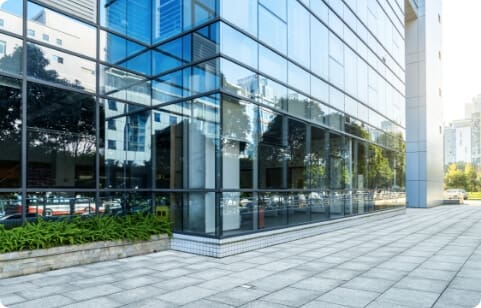Commercial property and land development is one of the most popular choices for small businesses and entrepreneurs looking to invest within a Small Self-Administered Scheme (SSAS). But before you jump into any work, it’s vital that certain steps are taken to ensure success, particularly given HMRC’s commercial property rules for SSAS pensions.
As a SSAS member, when asking whether you can invest your pension in commercial property, some of the key things to consider upfront are:
- Does any property development offer a clear benefit to the SSAS? So, will you be making the property more marketable or valuable? It’s important that you procure real evidence of the potential of the works from a surveyor.
- Is the work you’re suggesting the responsibility of the tenant under their lease? A SSAS should not pay for work like decoration or general repairs, unless a surveyor has highlighted this as an area that would result in an uplift in rent.
- Have you provided your insurer full details of the works? You should always do so before it takes place. They may have recommendations to make and getting their approval also ensures future claims are not invalidated.
- Have your trustees taken tax advice? If the SSAS is paying for substantial works, it’s important to seek advice as to whether you can register your scheme for VAT and reclaim VAT on the building work or development.
For work undertaken by the landlord
While all member trustees are responsible for SSAS assets, development proposals are best discussed with a professional trustee or scheme administrator. You should aim for at least two independent quotes for the work you anticipate, a schedule and details of how it is to be funded, along with valuation advice from a surveyor. Then all trustees can review before signing off.
If borrowing is required, any lending should be secured before work begins. This should include details of the cashflow projection, a contingency (should anything go awry) and a repayment moratorium put in place for the duration of works.
When acquiring larger developments, trustees should think about employing property professionals including an architect, quantity survey and an independent project manager. For developments over £30,000, a joint contract tribunal (JCT), drawn up by or reviewed by a solicitor, should also be strongly considered.
A JCT assists in the process of delivering a building project by setting out the responsibilities of all parties and their obligations to each other and can help to prevent real-time and future disputes.
Lastly, it is important to remember that when undertaking work on a property within a SSAS, the pension scheme is not permitted to pay for fixtures, fittings or anything that could be deemed tangible moveable property as this would create a tax liability.
For works undertaken on tenant request
Ongoing maintenance of a property is, in general, the responsibility of the tenant, and SSAS doesn’t require consent for this type of work to be conducted.
However, in some instances, tenants may wish to carry out building or ‘fitting out’ works, for example a hairdresser looking to fit new wash basins. This type of work falls outside the ‘general repair’ covenant of the tenant’s lease, so they may need to apply for the trustee’s permission to undertake the work, to ensure that any work completed doesn’t have a negative impact on the value of the property.
All work undertaken should be documented in a ‘Licence for Works’ drafted by a solicitor. This becomes a record of the work agreed and explains what will happen at the end of the tenant’s lease. By keeping all requests in writing, including the schedule of works, the tenant’s confirmation it will meet the associated costs and, should a mortgage be secured, the lenders consent, there is less likelihood of a dispute later down the line.
Conversion to residential property
Planning processes relating to conversion of commercial property to residential have recently been simplified by the Government. However, residential property is still deemed taxable within a SSAS. As such, full development or conversion to residential property should never be considered.
But you can find a bit of a loophole. You can still obtain the planning permission for residential and sell your commercial property on with this as an overage, provided the SSAS pension never holds direct financial interest in a ‘residential’ property.
So, it’s clear to see why purchasing property within a SSAS pension, and potentially developing it too, remains a popular option, as long as you engage the correct professionals to ensure all works are carried out appropriately to avoid a tax penalty.

